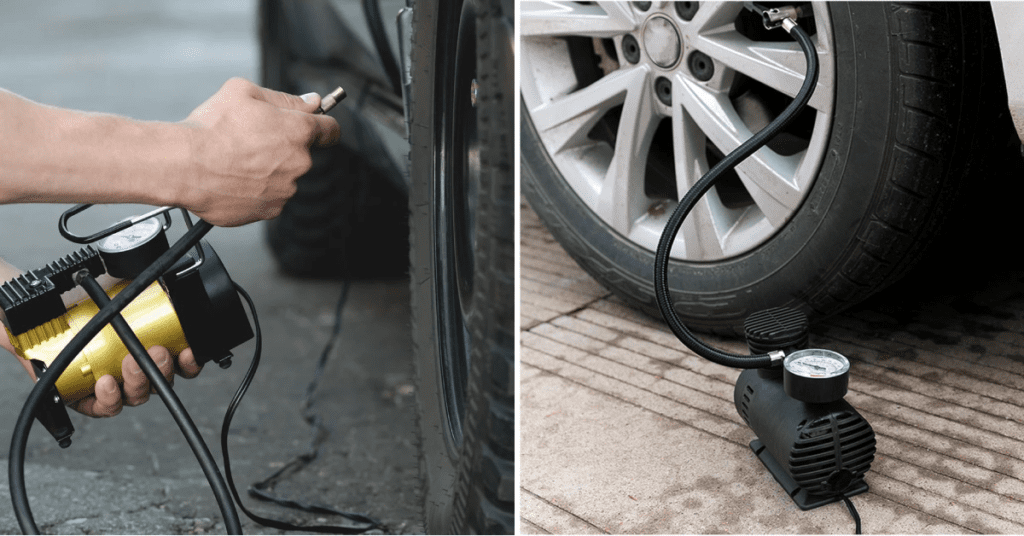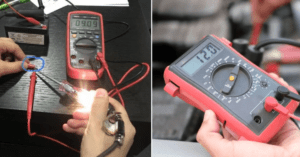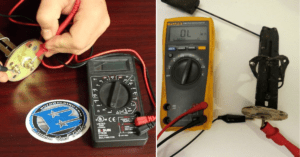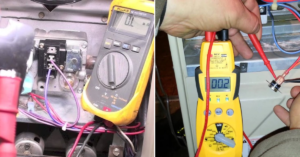How to Attach Tire Inflator to Air Compressor
Tired of wasting time and energy trying to inflate your tires? Need a reliable way to make sure your pressure levels match the manufacturer’s recommendation? Wondering how you can be confident that it’s been done right every time without waiting in line at the gas station or relying on an automotive shop? Look no further than attaching a tire inflator to an air compressor! With such a setup, inflation is easy, efficient, and cost-effective. In this post, we’ll explain exactly how to attach tire inflator to air compressor for both car owners and motorists alike.

Understanding the Importance of a Tire Inflator
Before we dive into the steps of attaching a tire inflator to an air compressor, it’s important to understand why this is such a valuable tool. Tires play a crucial role in the performance and safety of your vehicle. Properly inflated tires not only improve gas mileage but also contribute to better handling, braking, and overall stability. Additionally, under or over-inflated tires can cause uneven tread wear and potential blowouts, putting both you and others on the road at risk. Using a tire inflator to maintain proper tire pressure is the key to avoiding these issues and ensuring your vehicle runs at its best.
Tools and Materials Needed for Attaching a Tire Inflator to an Air Compressor
To successfully attach a tire inflator to an air compressor, you will need the following tools and materials:
- An air compressor (preferably with a regulator)
- A tire inflator with an attached pressure gauge
- An air hose with compatible connections for both the compressor and inflator
- A tire pressure gauge (for accuracy check)
- Teflon tape (optional)
Safety Precautions for Attaching a Tire Inflator to an Air Compressor
Before we get into the process, it’s essential to mention some safety precautions that should be followed when working with an air compressor and tire inflator:
- Always wear protective gear such as safety glasses and gloves. Inflating tires can often lead to debris and fragments flying, which can be dangerous.
- Make sure to read the instruction manual for both the air compressor and tire inflator before use. This will ensure proper handling and reduce any risks of accidents or damage.
- Check the pressure capacity of your air compressor and make sure it matches the requirements for your tires. Over-inflating can cause serious damage or blowouts.
2 Simple Steps to Prepare Your Air Compressor
Step 1: Checking Air Compressor Specifications
The first step is to ensure that your air compressor has the correct specifications for inflating tires. Most air compressors have a regulator that controls the pressure output, making it ideal for tire inflation. Check the manual or manufacturer’s website to confirm if your specific model is suitable for this purpose. If your air compressor doesn’t have a regulator, it’s best to invest in one before moving forward.
Step 2: Assembling Necessary Adapters (if needed)
Some air compressors come with universal adapters, while others may require additional attachments. It’s essential to make sure you have all the necessary adapters and fittings before proceeding. If your air compressor does not already have a quick-connect coupling, it’s recommended to purchase one. This will make the process smoother and easier in the long run.
3 Easy Steps to Connect the Tire Inflator to the Air Compressor
Now that you have all the necessary tools and materials, it’s time to attach the tire inflator to your air compressor. Follow these simple steps:
Step 1: Identifying the Inflator Connection
Take a closer look at your tire inflator, and you’ll notice that it has an air valve connection that closely resembles the ones found on your tires. This connection is specifically designed to allow the attachment of an air hose, which is an essential component for inflating your tires. By ensuring a secure and proper connection between the inflator and the air hose, you can effectively and efficiently inflate your tires with ease.
Step 2: Attaching the Inflator Chuck to the Hose
Using a quick-connect coupling or the required adapter, attach the hose to the air compressor. Make sure it is secure and tightly fitted. Then, take your tire inflator and attach it to the other end of the hose. Again, ensure that this connection is tight and secure.
Step 3: Connecting the Hose to the Compressor
Now, take the other end of the hose and connect it to the air compressor’s quick-connect coupling or adapter. If your compressor has a regulator, make sure it is turned off before attaching the hose. Once connected, turn on your air compressor.
2 Simple Steps to Adjust Air Pressure Settings
Step 1: Setting the Desired Tire Pressure
To ensure optimal tire pressure, use a tire pressure gauge to check the recommended level. Typically, this information can be found on the inside of your car door or in the owner’s manual. Once you have this number, adjust the pressure gauge on your tire inflator accordingly. By doing so, you can be confident that your tires are inflated to the correct pressure level.
Step 2: Adjusting the Compressor Pressure Regulator
To adjust the air pressure of your air compressor, utilize the regulator. Begin with a lower setting and gradually increase it until the desired pressure is achieved. This approach will prevent over-inflation and ensure that all tires are uniformly inflated. After reaching the desired pressure, turn off the air compressor and detach the hose from both the inflator and compressor.
3 Simple Steps to Inflate Your Tire
Step 1: Placing the Inflator Chuck on the Tire Valve
To begin, carefully position the inflator chuck on the tire valve, making sure to create a secure and snug seal. This is crucial as it will effectively prevent any air from escaping while the inflation process takes place, ensuring a more efficient and successful outcome.
Step 2: Activating the Compressor
Once the inflator chuck is securely in place, turn on the air compressor. As you do so, you will hear a gentle hum as the compressor comes to life, ready to perform its task. This will initiate the inflation process and allow a steady stream of air to flow into your tire through the valve, gradually filling it with the much-needed pressure. With each passing second, you can observe the tire gradually expanding and regaining its optimal shape and size. This simple yet crucial step ensures that your tire gets the right amount of air, promoting safety and optimal performance on the road.
Step 3: Monitoring Tire Pressure
As you continue inflating, keep an eye on the tire pressure gauge. It’s essential to monitor the pressure closely and turn off the compressor once it reaches the recommended level for your vehicle. Over-inflating can cause damage to your tires and even lead to blowouts while driving. Once you have reached the desired pressure, remove the inflator chuck from the tire valve and make sure to properly secure it before driving.
3 Steps to Remove the Tire Inflator
Step 1: Turning Off the Compressor
Before removing the inflator from the tire, it is crucial to turn off the compressor. By doing so, you can effectively prevent any excess air from flowing into your tires and causing over-inflation, which could potentially lead to decreased tire performance and safety concerns. Taking this simple yet important step ensures that your tires remain properly inflated and ready for a smooth and safe ride.
Step 2: Removing the Inflator Chuck from the Tire Valve
Once the compressor is turned off, carefully remove the inflator chuck from the tire valve. To ensure safe and proper deflation, it is important to do so gently and slowly, releasing the air in a controlled manner. This cautious approach helps prevent any sudden air bursts that may lead to over-inflation and potential damage to the tire. Taking the time to handle this step with care can contribute to maintaining the longevity and performance of your tires.
Step 3: Disconnecting the Hose from the Air Compressor
Finally, disconnect the hose from the air compressor’s quick-connect coupling or adapter. Make sure to properly secure it for storage and keep all attachments in a safe place for future use. By following these simple steps, you can safely and effectively remove the tire inflator from your air compressor, completing the process with ease.
Now that you know how to properly use and adjust your tire inflator, it’s important to know when it’s time to replace your tires. Regularly checking the tread wear and pressure of your tires can greatly impact their performance and overall safety on the road.
Proper Storage and Maintenance for Your Air Compressor and Tire Inflator
To ensure the longevity and effectiveness of your air compressor and tire inflator, proper storage and maintenance are essential. Here are a few tips to follow:
- Store in a clean, dry place away from moisture or extreme temperatures.
- Check for any signs of wear and tear, such as cracks or leaks.
- Keep hoses and connections clean and free from debris.
- Regularly check and replace worn-out parts as needed.
By following these simple steps, you can ensure that your air compressor and tire inflator are always ready to use when needed. With proper care, they can last for years to come, providing a convenient and efficient way to keep your tires inflated and safe on the road.
Troubleshooting Common Issues for Tire Inflation
If you encounter any issues while inflating your tires, here are a few troubleshooting tips:
- If the tire is not inflating, check for proper connections and make sure the valve is open.
- If the tire is over-inflated, release air using the pressure release valve on the compressor.
- If the tire is still under-inflated, check for any leaks and make sure the inflator chuck is properly attached.
- Consult your air compressor’s manual for specific troubleshooting tips.
By following these simple steps and tips, you can easily connect your tire inflator to your air compressor and achieve optimal tire pressure in no time.
FAQs About Attaching Tire Inflator to Air Compressor
How often should I check my tire pressure?
It is recommended to check your tire pressure at least once a month or before long trips.
Can I use a tire inflator without attaching it to an air compressor?
Most tire inflators are designed to work with an air compressor. Some may have a small air storage tank to allow brief inflation without a compressor. Read the product details to see if it can work independently.
What adapter do I need to connect different connector types?
If your air compressor and tire inflator have mismatched connector types, you’ll need an adapter that has the appropriate fittings on each end. Adapters are available to join things like Milton x Industrial, Camlock x Quick-Connect, etc. Know the connections needed and purchase the correct adapter.
Is tire inflator an air compressor?
No, a tire inflator is not the same as an air compressor. A tire inflator is a device specifically designed to inflate tires, while an air compressor is a more versatile tool that can be used for various applications, including inflating tires
What PSI is good tire pressure?
The recommended tire pressure, measured in pounds per square inch (PSI), can vary depending on the specific vehicle and tire. It is typically indicated in the vehicle’s owner’s manual or on a sticker located on the driver’s side door jamb, glove compartment, or fuel filler flap. It is important to follow the manufacturer’s recommended tire pressure for optimal performance, safety, and fuel efficiency.
Conclusion
In conclusion, it is important to understand the importance of a tire inflator and how to use one appropriately. Not only can the tool aid in improving your car’s overall performance, but it can also save you money on costly puncture repair fees by allowing you to easily fill a tired up yourself. To ensure maximum safety, use caution when working around air compressors and electric-powered tools such as the tire inflator. Remember to store your inflator correctly and consult the user manual should any issues arise.
Don’t forget to pay attention to the manufacturer’s recommendations for AIR pressure settings and double-check your results visually or on a digital gauge. Once you get used to how a tire inflator works and learn its maintenance instructions, you will be able to responsibly pump up the tires of your vehicle without spending too much time or effort. As always, make sure to drive safely and enjoy the road with properly inflated tires!






